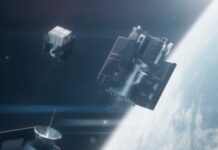
Italian in-space logistics company D-Orbit has announced that its Celestial Bliss mission has moved into the commercial phase with the deployment of four Spire Lemur-2 satellites.
The D-Orbit Celestial Bliss mission was launched on 16 August aboard the SpaceX Falcon 9 Transporter-11 flight. A total of five satellites and four hosted payloads were carried to orbit aboard the company’s ION space tug. The ION space tug utilized for the Celestial Bliss mission is called Magnificent Monica, after one of the company’s employees, a well-established D-Orbit tradition.
Following its launch, the company began the commissioning phase of Magnificent Monica. This phase includes establishing communications with the ground, correcting its attitude, testing subsystems, and preparing for the next phase of the mission.
On 26 August, D-Orbit announced that it had completed the commissioning of Magnificent Monica and had begun to deploy four Lemur-2 Earth observation satellites for US-based space data and analytics company Spire Global. In addition to the four satellites for Spire Global, Magnificent Monica will also deploy one other satellite for an undisclosed customer. Three of the space tug’s four hosted payloads are unnamed, while the fourth is an in-orbit demonstration of a prototype of the TetraPLEX AI-enabled satellite processor from the South Korean startup TelePIX.
Following the deployment of the last of the five-passenger satellites, the Magnificent Monica space tug will enter the in-orbit validation phase of the mission. During this phase, the company will begin in-orbit testing of the four hosted payloads.




